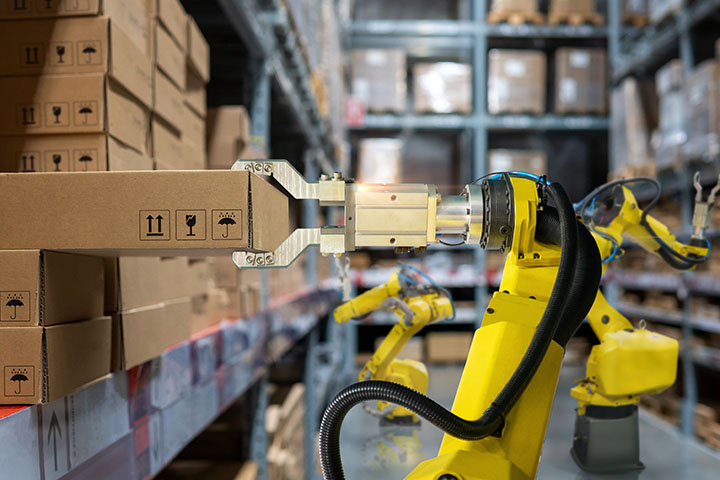In recent years, the world has witnessed a remarkable transformation in the realm of warehousing and logistics. Advancements in technology, particularly in automation, have revolutionized the way warehouses operate. With the advent of robotics, artificial intelligence, and other cutting-edge technologies, a futuristic wave of warehouse automation has emerged and U-PIC has been fortunate enough to be invited to witness it firsthand.
This blog will explore the exciting developments in this field and their potential implications for the future.

Robotic Systems:
Robotic systems have become an integral part of modern warehouses, enhancing productivity, efficiency, and safety. Traditional manual tasks, such as order picking, packaging, and palletizing, are being taken over by robots. These machines are equipped with advanced sensors and algorithms that enable them to navigate warehouse environments autonomously, avoiding obstacles and optimizing routes. With their tireless work ethic and precision, robots significantly reduce human error and increase overall operational speed.
During a recent visit to one of our esteemed clients, our company had the pleasure of witnessing these robotic systems in action. It was a truly awe-inspiring sight to see rows of robots seamlessly maneuvering through the warehouse, efficiently retrieving and transporting goods. The precision and speed at which these robots operated were remarkable, showcasing the immense potential of warehouse automation.
Artificial Intelligence (AI) and Machine Learning:
The integration of AI and machine learning has propelled warehouse automation to new heights. AI algorithms can analyze vast amounts of data, enabling warehouses to make informed decisions in real-time. Predictive analytics and demand forecasting algorithms help optimize inventory management and ensure products are stocked at the right time and in the right quantities. AI-powered systems also allow for dynamic warehouse layout optimization, adjusting the placement of goods based on demand patterns and minimizing travel distances for workers and robots alike.
During our visit, we had the opportunity to witness the power of AI and machine learning firsthand. The client's warehouse utilized sophisticated AI algorithms that continuously analyzed data from various sources, including customer orders, historical sales data, and market trends. This enabled them to make data-driven decisions and efficiently allocate resources, ultimately streamlining their operations and improving customer satisfaction.
Internet of Things (IoT) and Sensor Technology
The Internet of Things (IoT) has paved the way for interconnected systems within warehouses. Sensors embedded in inventory, equipment, and vehicles collect and transmit data in real-time. This data enables warehouse managers to monitor conditions such as temperature, humidity, and inventory levels. By leveraging IoT, warehouses can achieve greater visibility and control over their operations, preventing delays, reducing waste, and ensuring optimal storage conditions.
At our client's facility, we observed how IoT and sensor technology played a vital role in their warehouse operations. Each item in their inventory was equipped with smart tags that provided real-time information on its location, condition, and other relevant details. This allowed for efficient tracking and monitoring, ensuring that products were stored under ideal conditions and enabling swift response to any deviations.
Conclusion
This futuristic wave of warehouse automation is redefining the warehousing and logistics industry. Through the integration of robotics, artificial intelligence, IoT, autonomous vehicles, and augmented reality, warehouses are becoming more efficient, productive, and adaptable to changing demands. Our recent visit showcased the incredible potential of these technologies. Witnessing the robotic systems and experiencing the power of AI and machine learning firsthand highlighted the significant impact that automation can have on operational efficiency and customer satisfaction.
Here at U-PIC, we are eagerly looking forward to any future opportunities to witness further advancements in warehouse automation. Each warehouse presents a unique set of challenges and requirements, and we are eager to explore how different businesses are leveraging automation to enhance their operations. By staying at the forefront of warehouse automation trends and learning from industry leaders, we can continue to provide our clients with cutting-edge insurance solutions that optimize their warehouse efficiency and drive their success in this futuristic era of automation.